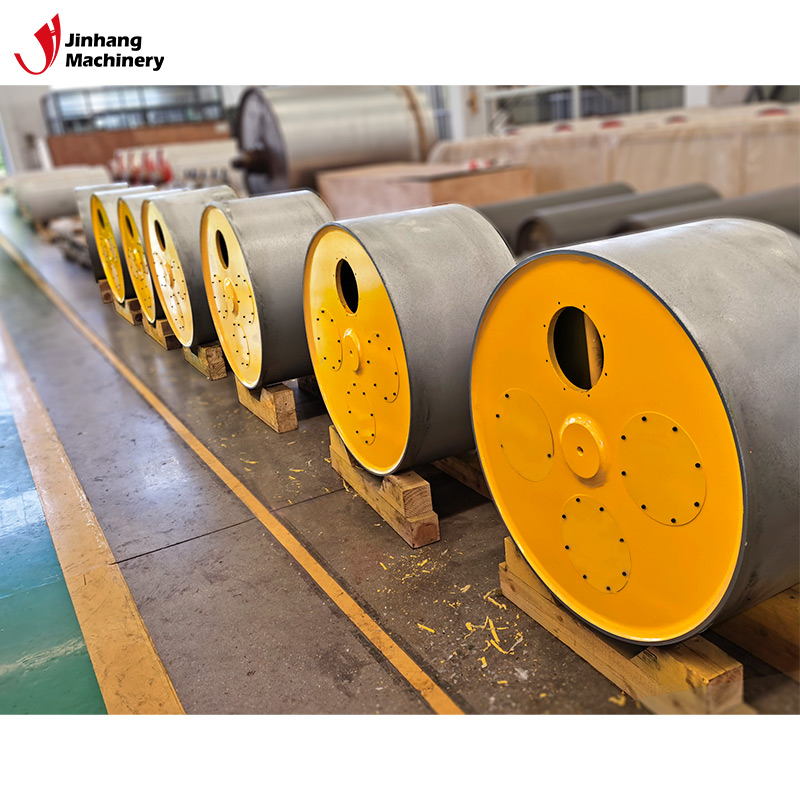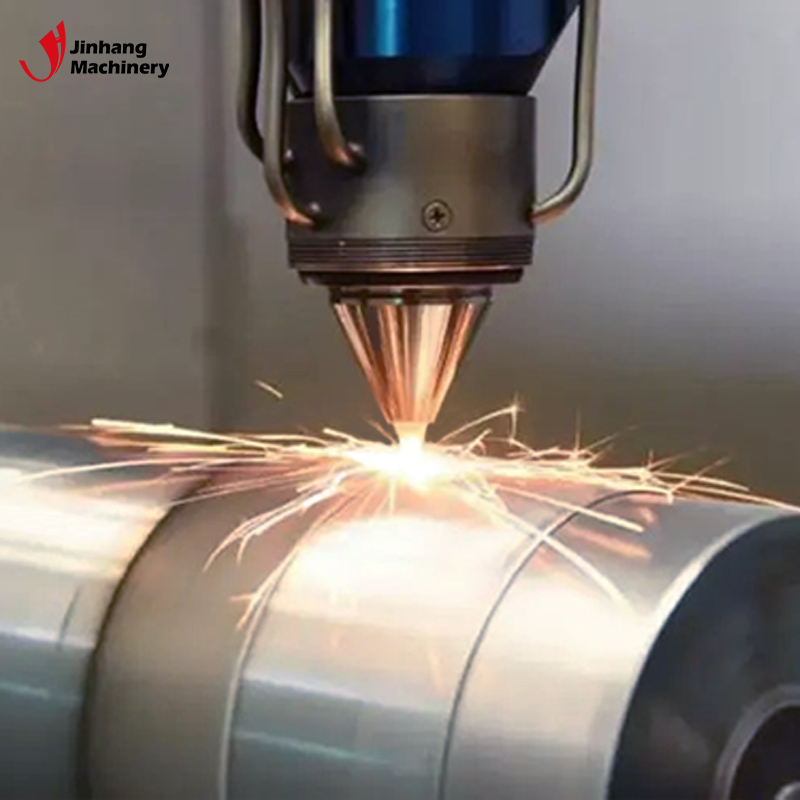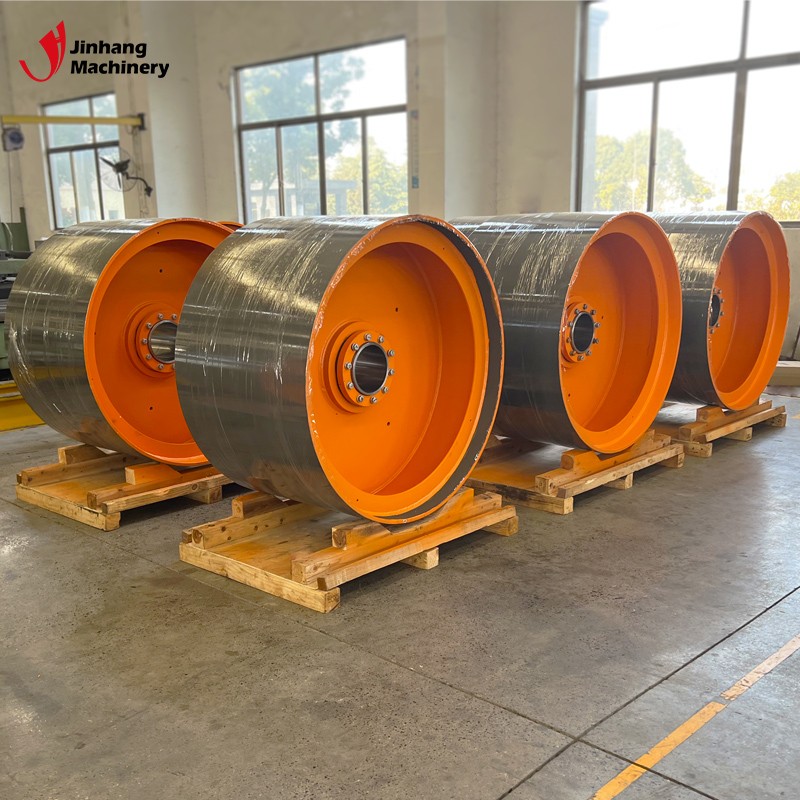Is Tungsten Carbide Roller Cemented Carbide?
In modern industry, cemented carbide rolls (Tungsten Carbide Rolls) are an important material and are widely used in many fields such as metal rolling, casting, and ore processing. Its excellent wear resistance, high temperature resistance, and corrosion resistance make it play an irreplaceable role in many heavy industries. In the manufacture of cemented carbide rolls, tungsten carbide (WC) is one of the core components, but is tungsten carbide roll equivalent to cemented carbide roll? This question often causes discussion and confusion among many people in the industry.
This article will analyze in detail the chemical properties of tungsten carbide, the definition of cemented carbide, the similarities and differences between tungsten carbide rolls and cemented carbide rolls, etc., to answer the question "Is tungsten carbide roll a cemented carbide?"

Definition and composition of cemented carbide
Cemented carbide is a high-hardness, high-wear-resistant material formed by the combination of metal or non-metallic elements and metals through high-temperature sintering. Cemented carbide generally includes two categories: tungsten-based alloys and molybdenum-based alloys, of which tungsten-based alloys are the most widely used. The main feature of cemented carbide is its extremely high hardness, which can usually reach 70-90 HRC (Rockwell hardness C scale), and it has good high temperature resistance, corrosion resistance, impact resistance and other properties.
The basic components of cemented carbide usually include:
● Tungsten (W): Tungsten is a high-density, high-hardness metal that is widely used in the manufacture of wear-resistant tools. Tungsten in cemented carbide is usually combined with carbon to form tungsten carbide (WC) crystals.
● Cobalt (Co): Cobalt is a binder commonly used in cemented carbide, which can improve the toughness and impact resistance of the alloy. The content of cobalt in cemented carbide is generally 5% to 30%.
● Other elements: such as molybdenum (Mo), tantalum (Ta), niobium (Nb), etc., can also be used as components of special cemented carbide to improve the high temperature stability and corrosion resistance of the material.
Therefore, cemented carbide rollers usually refer to tungsten-based alloy rollers, especially alloys composed of tungsten and elements such as cobalt and carbon. Among these alloys, tungsten carbide (WC) is the main hard phase, and its addition greatly improves the hardness and wear resistance of the alloy.

What are the characteristics of tungsten carbide?
Tungsten carbide (WC) is a compound formed by the combination of tungsten and carbon elements, with very high hardness and chemical stability. It usually exists in the form of fine particles, has extremely strong wear resistance and corrosion resistance, and is widely used in tool manufacturing, spraying materials, drilling tools and other fields.
The chemical formula of tungsten carbide is WC, and it is often combined with metals to form composite materials. It is very stable at room temperature, with a melting point of up to 2870℃. It is the third hardest material known, second only to diamond and cubic boron nitride (c-BN). This extremely high hardness makes tungsten carbide a key material for making cemented carbide.
● Hardness and wear resistance: Tungsten carbide has an extremely high hardness, which can reach 2000-3000 HV in the Vickers hardness test. Therefore, it can show excellent wear resistance in high friction environments. The stability of tungsten carbide in a variety of high-pressure and high-temperature environments is also an important reason for its wide application.
● Thermal stability: Tungsten carbide exhibits very good thermal stability at high temperatures, and its hardness and structure remain stable even at extremely high operating temperatures.
● Chemical inertness: Tungsten carbide has high chemical inertness and good corrosion resistance in many acid and alkaline environments. This makes it perform well in some special industrial environments.

What is the relationship between carbide rollers and tungsten carbide rollers?
According to the above definition of carbide and the analysis of the properties of tungsten carbide, there is a certain connection between tungsten carbide rollers and carbide rollers, but they are not completely equivalent. In order to better understand the relationship between the two, we need to further explore the differences in their composition, manufacturing process and application scenarios.
1. Composition of tungsten carbide rollers
Tungsten carbide rollers usually refer to rollers with tungsten carbide as the main component. The core material of tungsten carbide rollers is tungsten carbide (WC), which can be combined with metal elements such as cobalt to improve toughness and processing performance. In tungsten carbide rollers, cobalt usually exists as a binder to enhance the structural strength and impact resistance of the rollers. Although tungsten carbide is an important component of cemented carbide, tungsten carbide rollers are not equal to cemented carbide rollers, because the composition of cemented carbide rollers is more complex and may contain other metal elements or alloy components in addition to tungsten carbide.
● Main ingredients: The main component of tungsten carbide rollers is tungsten carbide (WC), and sometimes metal elements such as cobalt (Co) and nickel (Ni) are added to improve the performance of the roller. Compared with cemented carbide rollers, the cobalt content of tungsten carbide rollers may be relatively low, and its composition is more focused on tungsten carbide.
● Binder composition: Cemented carbide rollers usually use metals such as cobalt or nickel as binders, while the binder composition of tungsten carbide rollers may choose different metals according to the needs of specific application scenarios. The cobalt content in cemented carbide rollers is usually higher, while tungsten carbide rollers pay more attention to the dominant role of tungsten carbide.
2. Differences in manufacturing processes
Although there are similarities in the manufacturing processes of cemented carbide rollers and tungsten carbide rollers, there are also significant differences.
● Manufacturing process of cemented carbide rollers: The manufacturing process of cemented carbide rollers usually involves mixing tungsten powder, cobalt powder and other alloy element powders in a certain proportion, and then performing pressing, sintering, and finishing through powder metallurgy processes. The composition of cemented carbide rollers is more diverse than that of tungsten carbide rollers, and other alloy elements such as molybdenum and tantalum are usually added to further enhance their overall performance.
● Manufacturing process of tungsten carbide rollers: The manufacturing process of tungsten carbide rollers pays more attention to the quality control of tungsten carbide. High-temperature sintering technology is usually used to combine high-purity tungsten carbide particles with a small amount of cobalt or nickel to make high-hardness tungsten carbide rollers. Due to the high hardness and high density of tungsten carbide, the manufacturing process of tungsten carbide rollers may be more complicated, and the sintering temperature and time need to be strictly controlled to ensure the quality of the product.
3. Differences in hardness and performance
There are certain differences in hardness and performance between cemented carbide rollers and tungsten carbide rollers. Tungsten carbide has extremely high hardness, which can reach 70-90 HRC, but due to the brittleness of tungsten carbide itself, its impact resistance and fatigue resistance are relatively weak. Therefore, the use scenarios of tungsten carbide rollers usually require lower impact loads, while carbide rollers have better comprehensive performance and stronger adaptability.
● Hardness: Tungsten carbide rollers have a higher hardness, generally reaching 70-80 HRC, which is suitable for high-speed and heavy-load processing conditions. Carbide rollers also have a higher hardness, but because they contain other alloy elements, the hardness value may be wider, usually 60-85 HRC, and have better comprehensive performance.
● Wear resistance: Due to the extremely high hardness of tungsten carbide, tungsten carbide rollers have very excellent wear resistance and can be used for a long time in high friction environments. The wear resistance of carbide rollers depends on the ratio of tungsten, cobalt and other alloy elements. The overall wear resistance may be slightly inferior to that of tungsten carbide rollers, but its comprehensive performance is more balanced.
● Toughness: Compared with tungsten carbide rollers, carbide rollers have better toughness and can withstand greater impact and vibration, so they are more adaptable under complex working conditions.
4. Different application scenarios
Due to the differences in composition, hardness, toughness, etc. between carbide rollers and tungsten carbide rollers, their application scenarios are also different.
● Carbide rollers: Carbide rollers are usually used in scenarios that require comprehensive performance, such as steel rolling, aluminum alloy rolling, ore processing and other industrial applications. Its good toughness and high hardness enable it to perform well under a variety of working conditions.
● Tungsten carbide rollers: Tungsten carbide rollers are mainly used in scenarios with high hardness requirements, such as high-precision rolling, and processing procedures with extremely high wear resistance requirements. Its excellent wear resistance makes it particularly prominent in some high-load, high-speed working environments.
